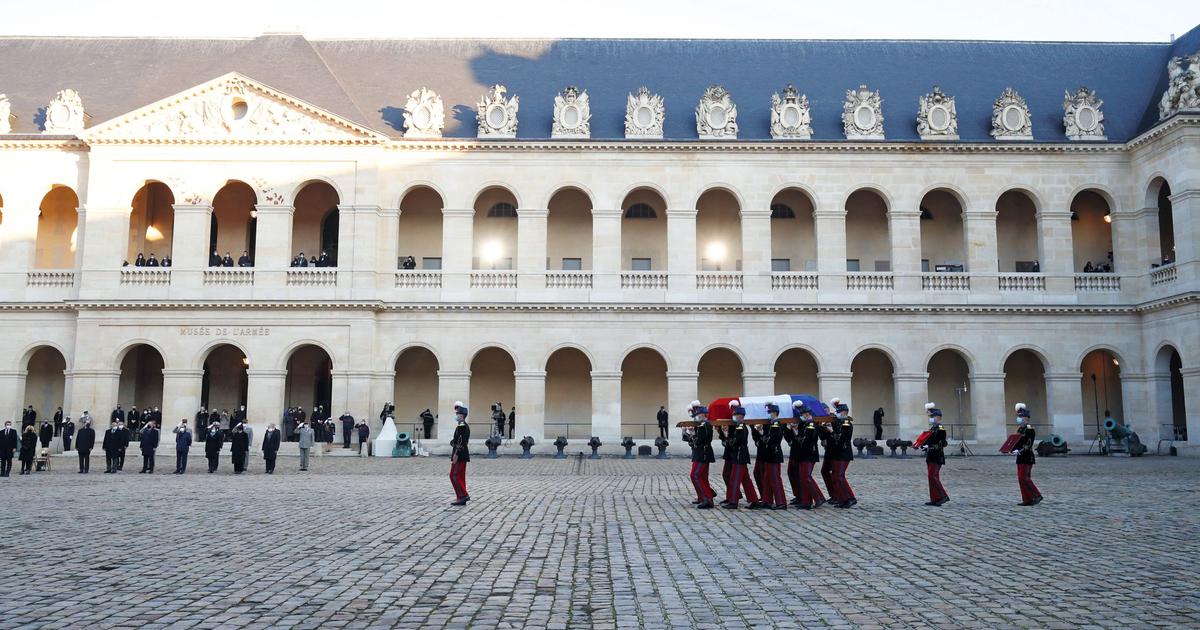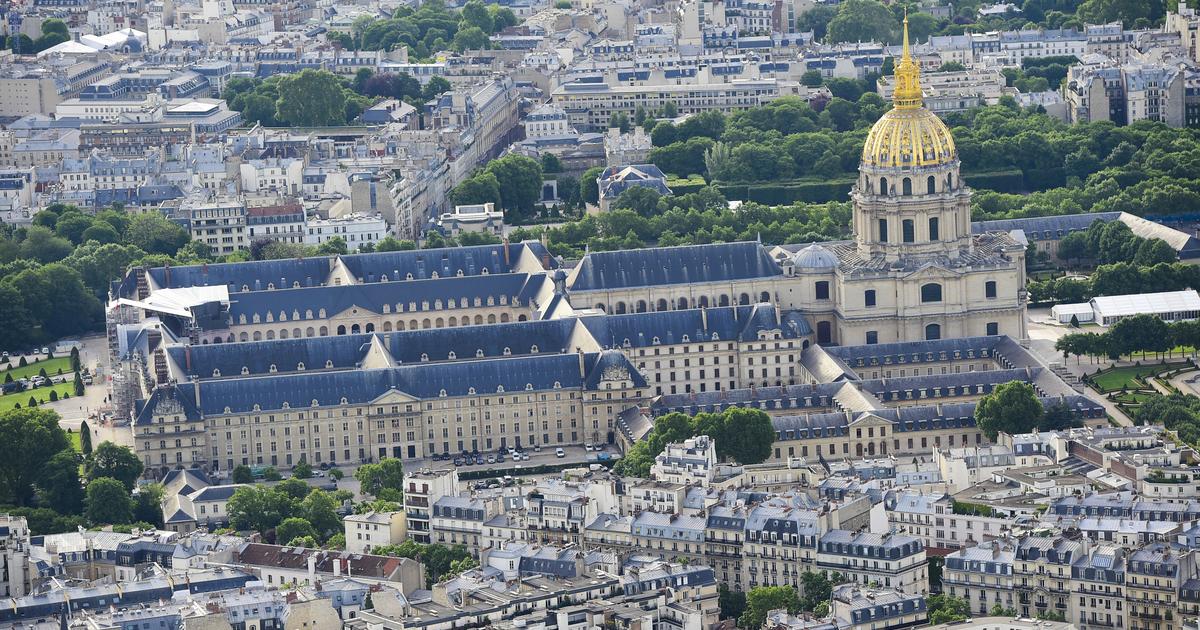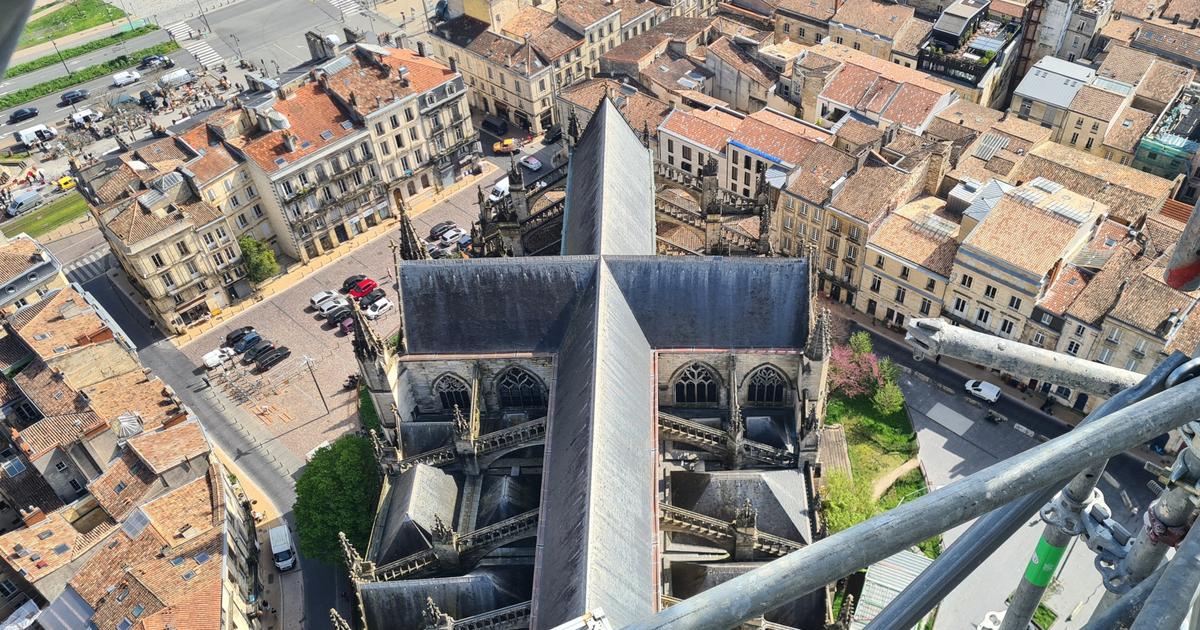So many injured after so many dead. What to do with all these crippled, mutilated men, who only know how to fight and suddenly find themselves unemployed, burdens of a country rolled up by wars? In France in 1670, the reign of Louis XIV was also one of endless conflict. Eighty Years War, Thirty Years War, Franco-Spanish War of Devolution, Reaper's War ... thousands of soldiers survive there but without pension, usually reduced to the street and begging.
It was for these veterans that on February 24, 1670, the Sun King signed the birth certificate: the ordinance for the creation of the Hôtel royal des Invalides, intended to receive and care for former soldiers. A monument that has become, just 350 years later, one of the most visited in France.
"Louis XIV concretizes there an old project of the monarchy", says Boris Bouget, historian of the Hôtel national des Invalides. Deciduous and crippled soldiers were found numerous in the streets of Paris, it was even a big factor of insecurity. Others found places of Oblates (laymen admitted to the communities of life of monks) in convents and monasteries.
The place chosen: the plain of Grenelle, which at the time was a bit outside the capital. “It was necessary near Paris and close to the Seine, a necessity for the construction site and for the life of the establishment, because at the time everything was routed by the river, continues Boris Bouget. The rivers were the highways of France. "
Entrusted to the engineer of King Liberal Bruant, the construction began in 1671. Its north facade runs over no less than 100 toises (195 m), rises to 22 m, perfectly symmetrical between its two long and rather severe side pavilions, framing a central building inversely charged with symbols of the power of the monarchy. Trophies, fleur-de-lis, bas-relief of a Sun King on horseback, represented in the costume of a Roman emperor ... "Ludovicus Magnus", can we read on the pediment of the building. "The King considered that he could be Emperor of the Holy Empire," recalls Boris Bouget.
Newsletter Going out in the Paris region
Every Friday, the news of your outings seen by Le ParisienI'm registering
Your email address is collected by Le Parisien to allow you to receive our news and commercial offers. Find out more
As for the framing, the warlike decor of the sculptor Guillaume Coustou depicts Athena, goddess of war, Mars power in its raw state, and a Hercules wearing a lion's skin ... The royal speech was clear, exalted of conquests.
Running water, this exceptional comfort
The huge hotel was ready to operate in 1674. Designed for around 1,500 to 2,000 soldiers, the Invalides will have nearly 4,000 residents. They slept in rooms of 4 or 5. Only the officers could have a particular room. They were aligned upstairs like cells, above four huge refectories decorated with scenes of wars.
Today transformed into exhibition rooms of the Army Museum, the refectories 50 m long under 8 m of ceiling sounded from the meal of 400 soldiers distributed around large tables and… a very small one, installed in the middle : that of the punished! Finally, exceptional comfort for Invalides: there was running water with large stone sinks where soldiers had to wash their hands before service.
The Invalides also house the Governors' Vault, a small necropolis with around 40 lead coffins and a few urns. It is here that the chief surgeon of the army Dominique Larrey, General Leclerc, Maréchal Juin, or even… Rouget de Lisle, the author of “la Marseillaise”, rest. "He died anonymously, recalls Boris Bouget. In 1915, his ashes were brought here temporarily, while waiting to honor him in the Pantheon. But the provisional lasted. "
DISCOVER… the 5th dormer window, a secret tribute to Louvois?
Beyond the facade, the 15 ha site is a model of symmetry: 16 interior courtyards, a quadrilateral plan reminiscent of that of hospitals of the time, and the largest of them, a vast 102 m long courtyard on 64 m wide, that the French know today for the ceremonies of tributes of the Nation to its soldiers died in combat, or to great personalities.
This soberly decorated courtyard, if not the 60 stone skylights, all different, which set it, conceals a peculiarity that only the seasoned eye - and erudite - deciphers: the 5th skylight of the pediment of the East wing denotes. Here there are no military symbols, coats of arms or weapons trophies but ... "an animal with the wolf head, seeming to have emerged from tall grass, looking at the courtyard and placing its paws on the bull's-eye doorway" , says Boris Bouget.
It could be a rebus, meaning the wolf sees , discreetly evoking the Marquis de Louvois, the Minister of War of Louis XIV, who had presided over the construction of the Invalides, but to whom the Sun King had made withdraw its coat of arms. Louis XIV wanted to remain the sole founder, and the only praised for having built it. History has it that the Marquis de Louvois, erased from visible elements of the huge hotel, would then surreptitiously take his "revenge" through this symbolic skylight.
WE MEET… a general at the head of the museum
Appointed in June 2017 at the head of the Army Museum, General d'Andoque strives to "better open the place to the public, who ignores its activity today". “The Invalides continue to be a building dedicated to the reception of former soldiers, wounded and victims of war. How many monuments have retained their original function, 350 years after their foundation? "
Today the hospital part of the Invalides welcomes 80 wounded, and 80 men are boarded there, French soldiers, foreigners, legionaries ... "French by bloodshed", likes to remind General d'Andoque.
On the occasion of the 350th anniversary, a new photographic exhibition will open next September, devoted to the daily life of the institution. There will also be several other events, including a long-term one: the live restoration, in the Dome church, of an emblematic work of the history of the place, a 1720 painting by Pierre Dullin of 20 m2 entitled " Establishment of the Hôtel Royal des Invalides ”.
We take this opportunity to ...
… Visit the Dome. It contains the tomb of Napoleon I. If he died on the island of Saint Helena on May 5, 1821, and he was buried there for almost 20 years before Louis-Philippe had his coffin repatriated under the Dôme des Invalides, Napoleon I was finally fulfilled his testamentary wish: he has rested since December 15, 1861 in a sarcophagus of 1,200 kg. The church of the Dome of 1706, initially cubic, surmounted by a drum, a double dome and paved with the most beautiful polychrome marble, will be dug to accommodate the monumental tomb.
… Discover the collections of the Army Museum, one of the richest in the world telling military history and the History of France through 500,000 objects, documents, uniforms, artillery pieces, figurines, musical instruments etc. Open every day from 10 a.m. to 5 p.m. (entrance 129, rue de Grenelle) entry 10 to 12 € free for children under 18. The ticket also gives access to the two other museums of the Invalides: the Museum of the Order of the Liberation and the Museum of Relief Plans.









